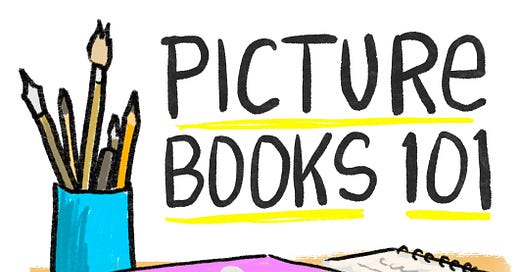Welcome to my Picture Books 101 post series, in which I talk about the basics of writing and illustrating picture books for young readers.
Also see my kidlit Substack listings:
Traditionally published children’s book illustrators on Substack
Traditionally published middle grade authors on Substack
Here are my Picture Books 101 posts so far:
Part 1 (for writers & illustrators): Intro, seven top tips for getting started.
Part 2 (for illustrators): Developing an illustration style and gaining confidence as an artist.
Part 3 (for writers & illustrators): Understanding picture book format and construction.
Part 4 (for writers): To rhyme or not to rhyme?
Part 5 (for writers): Why picture book authors DON’T need to find an illustrator before they submit their manuscript.
Part 6 (for illustrators): Physical vs Digital art? Plus a caution about using AI art.
Part 7 (for illustrators): Tip for conveying authentic emotions in your characters.
Part 8 (for writers & illustrators): What to do when you get a great picture book idea.
Part 9 (for writers): Art notes. When should you include art direction for the illustrator in your picture book mss?
Special instalments:
Behind-The-Scenes: Creation Of A Picture Book Cover






Wonderful resource, Debbie!
Debbie, you are a staple in my first unit (Foundations) for my high school creative writing seniors. We start with the picture books they loved, add in the wild new world of picture books, and go about the business of creating their own illustrated stories to share with the grade school kids. It's the most wholesome and memorable unit of the whole year, and it sets the stage for understanding and developing their voice, considering a real audience, grasping the depth of work and revision required, and and BEST OF ALL, how fantastic it feels to share their completed project. Thank you for putting these useful tips into the world.